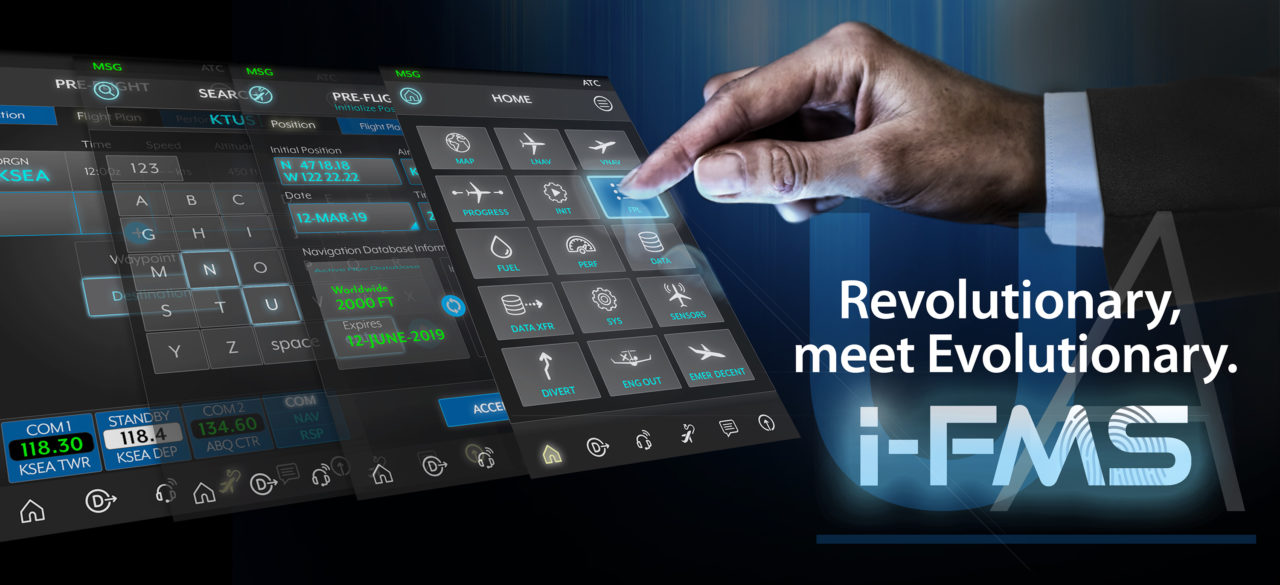
Artwork for Universal Avionics’ new interactive flight management system. (Universal Avionics)
Universal Avionics’ next-generation flight management system will be a software-based solution based on an integrated modular avionics infrastructure, the company revealed at the Paris Air Show this week.
The ClearVision Interactive-FMS augments head-up displays (HUD) and wearable devices are integrated more closely with the flight deck, allowing the pilot to “fly by sight,” the company said, reminiscent of the capability that parent company Elbit built into the helmet of the F-35.
“Market trends are moving in the direction of software-based FMSs rather than hardware, as they offer users a more flexible and open-architecture system,” said CEO Dror Yahav. “New, innovative interfaces, augmented to the real world utilizing HUD technology is where we believe the market is heading. It’s the future of flying and we’re seeing a high level of interest in it. What really distinguishes our i-FMS solution is that we designed it to support flying by sight. It will simplify avionics and eliminate many of the current pain points in pilot interfaces.”
One of those pain points that UA identified is the transition point between a pilot focusing on things outside of the cockpit and redirecting their attention to displays and controls inside the cockpit during critical flight phases such as takeoff. If the pilot can instead project superimposed waypoints and information from the FMS onto what they are seeing outside the cockpit, it removes the need to shift attention. The pilot can interact with this information through eye- and head-tracking and a select/deselect button on the yoke or throttle, according to UA.
UA’s Interactive FMS, which the company expects to have certified in the latter half of 2020, will be made available to both commercial and military customers, compatible with any ARINC 653-compliant platform. While it can be used with different human-machine interfaces, it is designed to work well with UA’s suite, and the Elbit subsidiary’s human-machine interface allows customers to easily design their own flight deck with built-in software, UA said.
Pushing hard on fly-by-sight functionality, UA is also integrating its SkyLens wearable helmet attachment with its InSight flight deck in a way that allows pilots to send commands to the system by looking at and selecting menu options with their eyes. This integrated interactive synthetic vision function allows pilots to change selected runway or approach and program waypoints by sight.
“Integrating the SkyLens [head-wearable device] with the InSight Display System offers a ‘next-generation’ cockpit, providing the ultimate presentation of essential flight data, precisely when pilots need it most,” Yahav said. “The integration also allows for improved performance with a significant reduction of workload and a new level of safety and operational effectiveness. It’s the first step to support single-pilot operation.”
The road to this ability was facilitated by the FAA’s passage of regulation 91.176, allowing the exclusive use of enhanced vision systems in landing procedures under the proper circumstances.